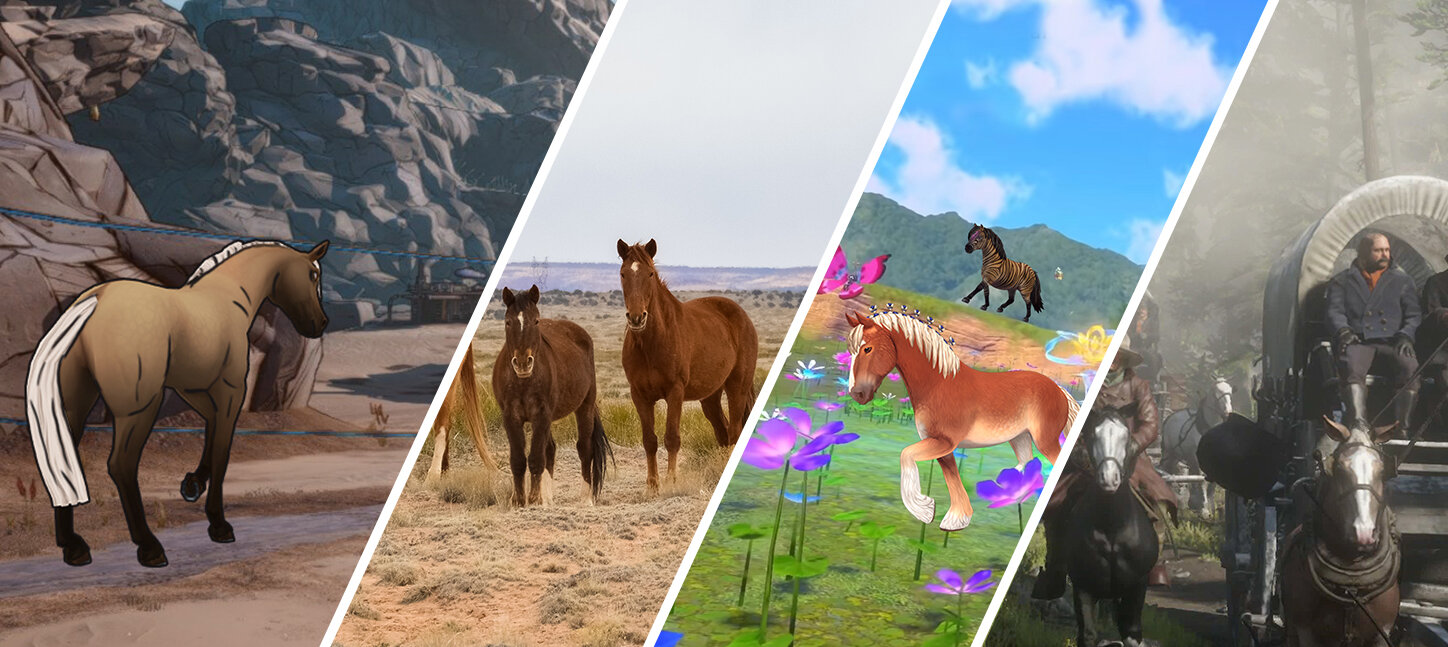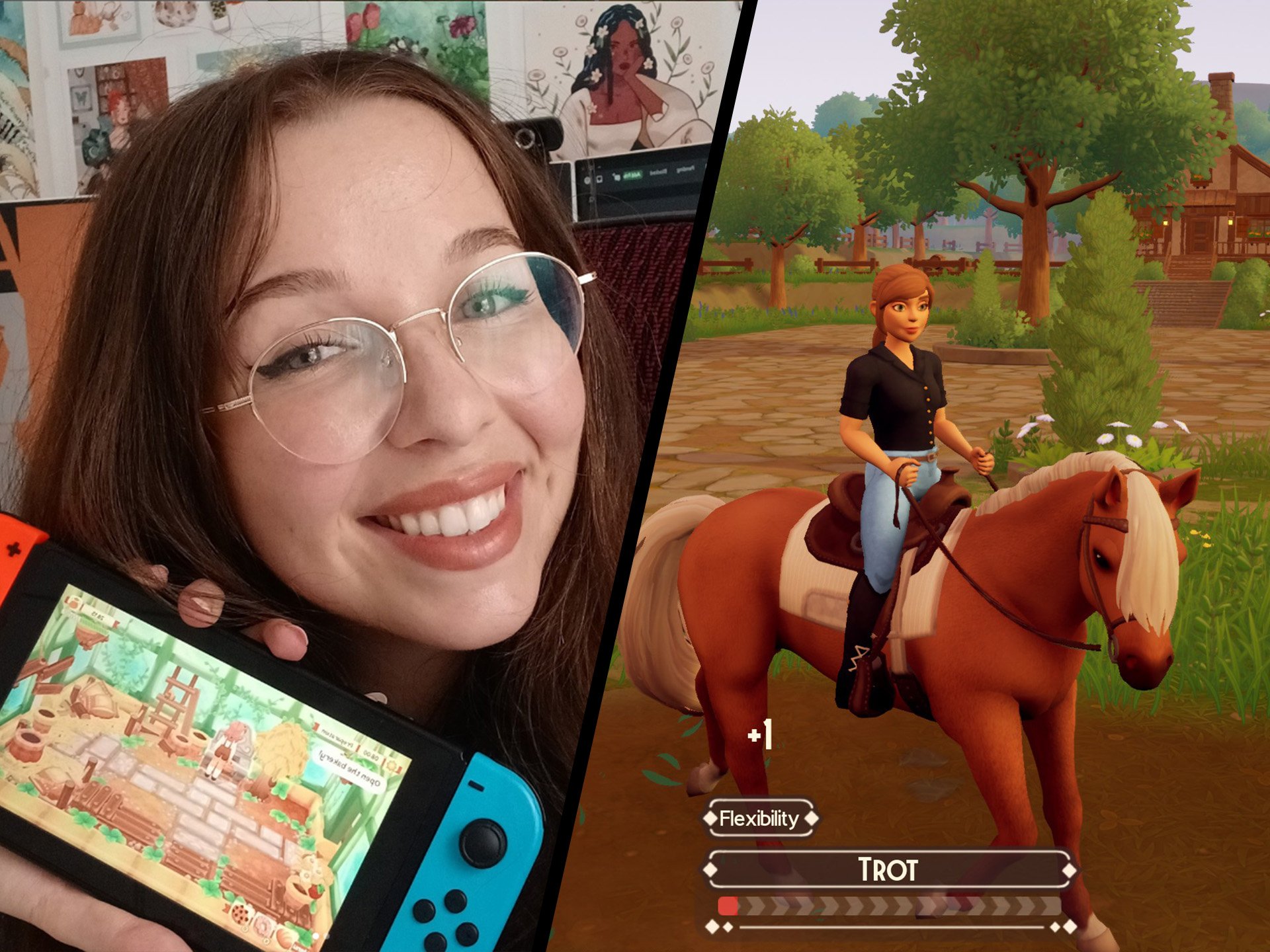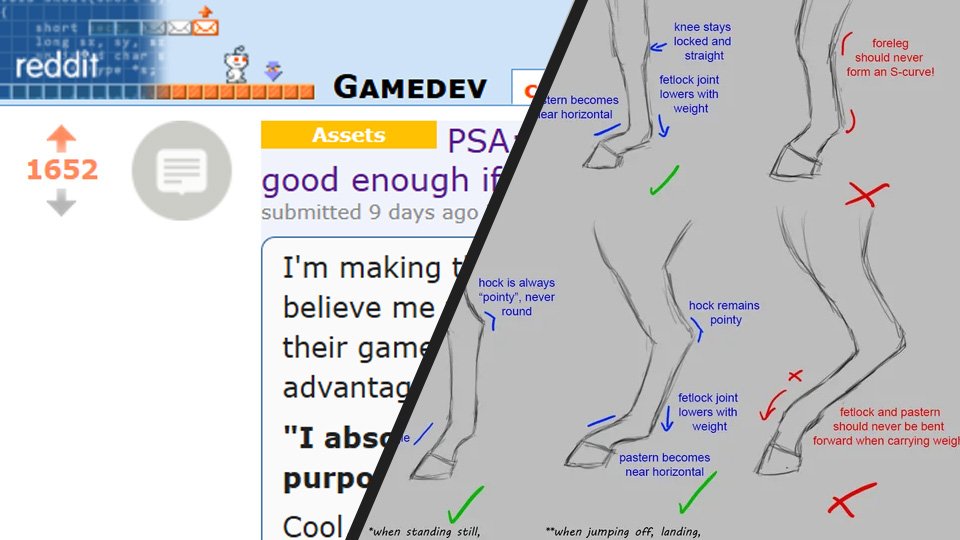5 Crucial Games Industry Tips for Horse Game Creators
This article is a bit of an add-on to my recent post The Indie Horse Game Revolution: 6 Upcoming Passion Project to Keep Your Eyes On – These tips were compiled while gathering info on those (and other) upcoming games and noticing a few common areas of improvement.
I’d rather have this advice stand on its own though: it doesn’t necessarily only apply to horse games (many first time game devs could profit from such things) but I do see it in almost every new horse game project launched by new creators without industry experience.
In case you just know me only as a horse game commentator, this is a good time to mention that I also have close to a decade of game producing and game marketing experience, and you can find more about my work outside of this website right here.
Without further ado: Let’s get to the advice.
1. Pick a unique Working Title
Enough with the working titles that boil down to variations of Some Horse Game Project. Users won’t be able to keep your game apart from the competition, your info won’t show up when people google it, and your project will lack the appearance of an original creative identity. This is fine while it’s private, but the moment you’re starting to share and promote the game with others, it’s also time for a “proper” working title.
If you don’t yet have a central location, character or mechanic to name your game after – though honestly I recommend picking this sooner rather than later, because it also helps streamline your creative vision – then at least pick a combo of an equestrian term plus another word that makes for a unique combo. Game titles – even working titles – can be incredibly hard to chose, but there are methods and processes that help, such as making a long list of possible words and themes to include and then trying out and voting for combinations.
A method that I find works really well for our genre is to pick an equestrian term and combine it with a nature or location themed word, maybe even with an alliteration for good measure. Some basic examples: Pony Plaza, Mare Meadows, Trotter Trails, Sunset Saddles, Hoof Haven, Bridle Beach.
It’s formulaic and it likely won’t yield the perfect final title, but anything is better than another variation of “Horse Game”.
Why it matters:
Search Engine Optimization: Establish a findable brand early on so anyone who hears of your game can find it right away.
Avoiding Confusion: A unique title will help users keep your game apart from the competition and remember its core features or characteristics.
URL Availability: if you plan on launching your game commercially, you’ll need a website address for it, and the less generic your game name the more likely you’ll be able to find the gamename dot com URL available.
Vision and Focus: A good title can communicate to your audience what the focus of your game is apart from the basic idea of “game about horses”. Naming after a character or location can imply narrative importance, while a title containing a specific discipline or piece of equipment can imply a focus on equestrian competitions or management.
The often similar titles of traditionally published horse games are already a mess – let’s not exacerbate the problem where we can actually have an impact!
2. Create a Landing Page for your Game
Social Media platforms like Instagram and Tiktok are fantastic to build a following for your WIP-game and to regularly serve people new information - but you will want one central place where anyone just learning about your game can get easily the most important info!
Ideally, a game landing page contains a brief game description or pitch, a few screenshots, an about section for who’s making this and links to your social media for more regular updates. If you’re not versed in web development, there are powerful tools like Squarespace or Wix that make website creation incredibly easy. And if you want the minimal cost and effort possible, at least put together a Carrd or Linktree with links to all your profiles and your press kit! (More on press kits below)
Why it matters:
Overview: Anyone new to your game – new users or press or influencers will be glad to get the gist of it at one glance, without having to scroll through dozens of daily posts and reels to get the basic info together.
Independence: Social media algorithms can help us get a ton of visibility, but they’re also infamously fickle. If a platform gets shut down or the algorithm stops working in your favor, you’ll want to have a backup for where people can find you and your project.
Professionalism: Not every game has the same commercial ambitions, but if you have any intention of becoming a serious participant in the games industry, a proper website will make a much better impression on potential team members, investors or business partners of any kind.
The image above is a Dall-E AI rendering of horse games in a store, because I’m not gonna find a stock photo of that, am I
3. Pick a Core Feature and Focus On It
In this niche, we often treat “horse game” as though it were a real genre with strictly defined characteristics. That’s not necessarily true though: while there are a lot of common elements like riding, breeding and stable expansion, creators of horse games should still strive to place their projects in more regular genre terms: is your horse game an RPG, a business management simulation, an adventure…? Any answer to that is fine, but trying to be “all of the above” is generally not a good idea. Trying to be everything at once and innovating on all fronts is a recipe for disaster, and for getting lost in feature creep and frustration.
In order to eventually be finished and released with a chance at success, any game needs a central feature or focus and a working and satisfying core gameplay loop. The sooner you know what yours is, the better. Projects that try to be everything at once or use the promise of future updates as a crutch for why the core is not yet working run the risk of never feeling complete.
So many of us grew up playing dozens of bad horse games. As a result, it’s tempting to think that “horse game, but good” is a completely sufficient game idea. But while that’s definitely a start and a good ambition, any serious game project needs its own identity and core appeal without relying on the comparison to bad predecessors.
Why it matters:
Avoiding Scope Creep: Scope Creep or Feature Creep is the phenomenon where your plans for a game just get bigger and bigger and you never finish anything. Games have a tendency to “never be done”, and finishing projects even though there’s lots of stuff that could be added is one of the first things many game creators have to learn.
Defining a clear identity: Give yourself and your audience something – a narrative theme, a character, a central mechanic or equestrian discipline – to focus on and make that what your game is really about. This helps you set yourself apart from direct competitors and gives players something concrete to look forward to.
Helps with picking title and target audience: Once you know what your game really is about (apart from just “horses”), you will have a much easier time building its brand and targeting the player base that’s interested in what you have to offer.
Tip: If you’re not sure what a horse game could look like if it’s not the usual “inherit a farm and become successful”, have a look at my lists of Horse Games That Should Exist:
4. Manage Player Expectations
Once you have that core feature focus, you can also communicate that to potential players. And no less important: you can also tell people what your game won’t be.
Don’t overpromise, communicate a fixed scope, consider sequels or follow ups if need be, don’t be afraid of saying ‘my game won’t have that’, even though some people will ask for it. You can never live up to everyone’s expectations, so don’t try to spread your resources too thinly by promising to do everything anyone asks for.
This niche’s audience is starved for good content, and there will always be those who react to your prototype footage by letting you know they expect Red Dead levels of horse AI or animation quality. You can’t fully control what players expect, but you can clearly outline scope and intentions in order to limit your audience dreaming too big and then ending up disappointed once they can actually play.
Most horse games in the traditionally published market won’t even publicly announce their games until a few months before release, because although building and maintaining active communication between creators and players can be beneficial for feedback, community management is also a science of its own with a lot of pitfalls. If you’re actively promoting your game in its prototype phase already, be smart and proactive about setting and reining in your players’ expectations.
Why it matters:
Avoid Disappointment: Any game that overpromises during development is bound to be met by disappointment when it actually releases – and reframing that disappointment with promises of further development is usually harder than setting realistic expectations from the beginning. Once your game is released (even if in an early access stage), you want players to come away with as positive an impression as possible, since those early reviews are going to drastically impact your visibility in digital stores.
Build sustainable hype: Help your players get excited about what they’ll actually get! Chances are that what your game realistically offers is more than enough to get people excited without letting expectations spiral into fever dreams. Be transparent not only about what you’d like to achieve, but about what you can certainly offer and when.
5. Set up a Press Kit
For some of the games in my Indie Horse Game Revolution article, I’ve had to take screen captures of Instagram videos to to get image material. As a result, some of those images are grainy, or have visible UI elements from the source website in them.
If your game is far enough in development that you’re sharing it on social media, you should also provide a handful of high resolution screenshots that press and influencers can use. It’s in your own best interest to make your game as easy as possible to report on, and a press kit is how you do that.
What is a press kit? It can be a section on a website, a page built with presskit(), or even just a Dropbox or Google Drive link with the relevant material in it. The kit should at the very least contain several decent full HD screenshots and a PNG of your logo if you have one. It also makes sense to include a short description or elevator pitch of your project, your official contact information, a gameplay video or trailer, and perhaps even a fact sheet with basic info such as planned release date, platform(s), playtime, genre and core features.
When selecting screenshots for a press kit, follow quality over quantity: 5-10 images are ideal. They should be visually distinct from each other in colors and composition, and show different parts of the gameplay and environments.
Why it matters:
Accessibility: Make it as easy as possible for press and influencers to talk about you by providing them with the most important information on a neatly prepared platter.
Avoid Misinformation: If you don’t have an official source for where to get info and material, the chances increase that press or influencers use outdated footage or get your information wrong. With an updated press kit, you drastically decrease that risk.
File Suitability: Some social media platforms like Instagram don’t let visitors save files directly. That’s fine for exposure to regular users, but press and influencers should be able to save and rehost your screenshots easily in order to showcase your project to their audiences.
Closing Words
I’ve tried to keep these tips somewhat abstract and generic in order to remain widely applicable. If you’re working on a horse game and you’re not sure how to follow through on any of these principles, send me an email (alice@themanequest.com) or reach out on Discord (Alice#9530) and I’ll be more than happy to help out.
Advice and other people’s learnings will only ever get you so far though: In the end, the best way to get better at making and publishing games is still to make and publish games. This means finishing smaller scope projects. Both we as players and the budding indie horse game dev community would profit immensely from seeing more small scale, constrained and streamlined games with interesting creative concepts released, finished and learned from.
As a first time game creator, you will inevitably make a lot of mistakes and eventually look back on what could have easily been avoided or done better. I hope that this list can at least keep some folks from getting the same handful of things wrong, because as always, I really just want more horse games to get made, finished and successfully released.

















